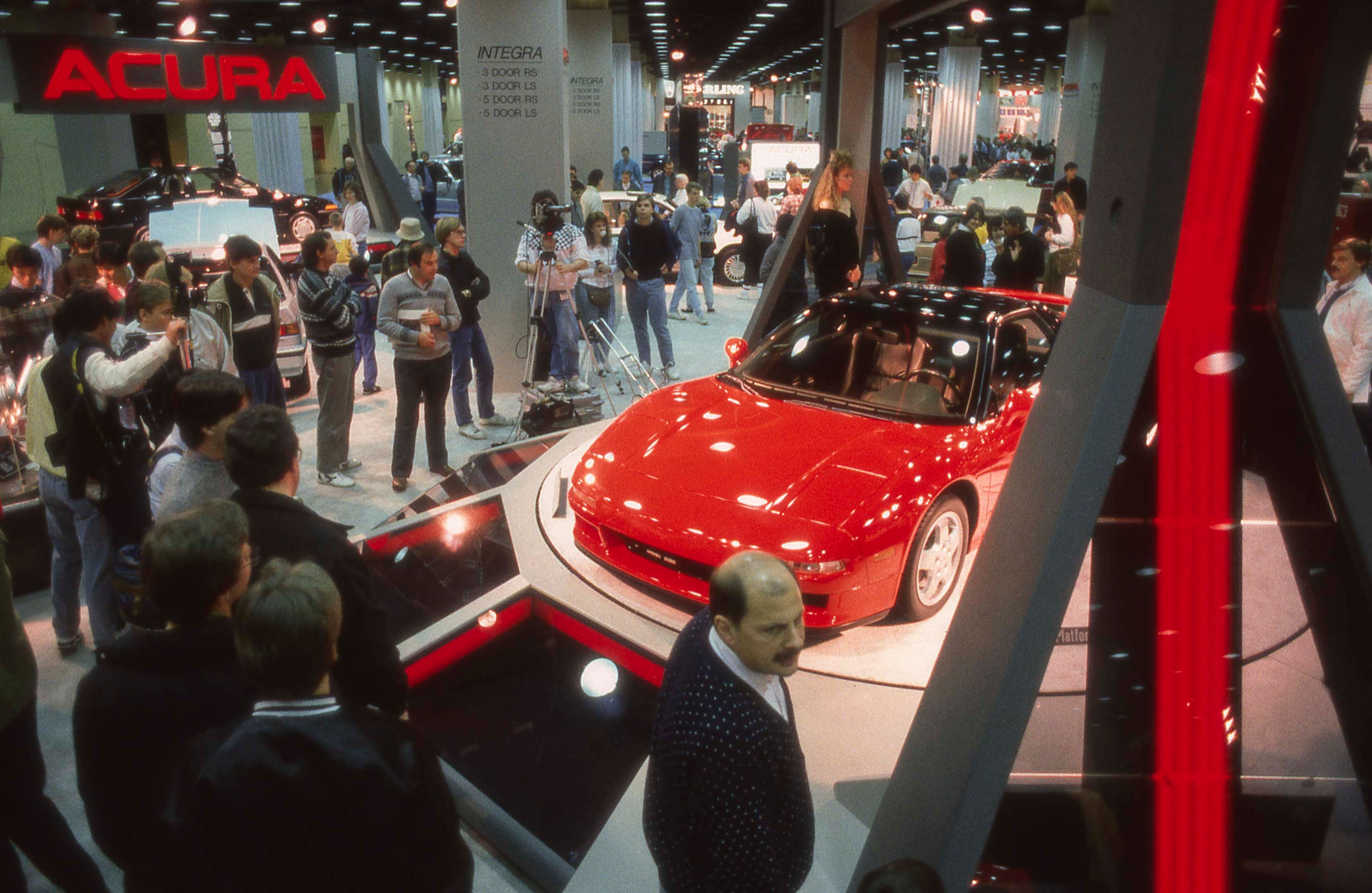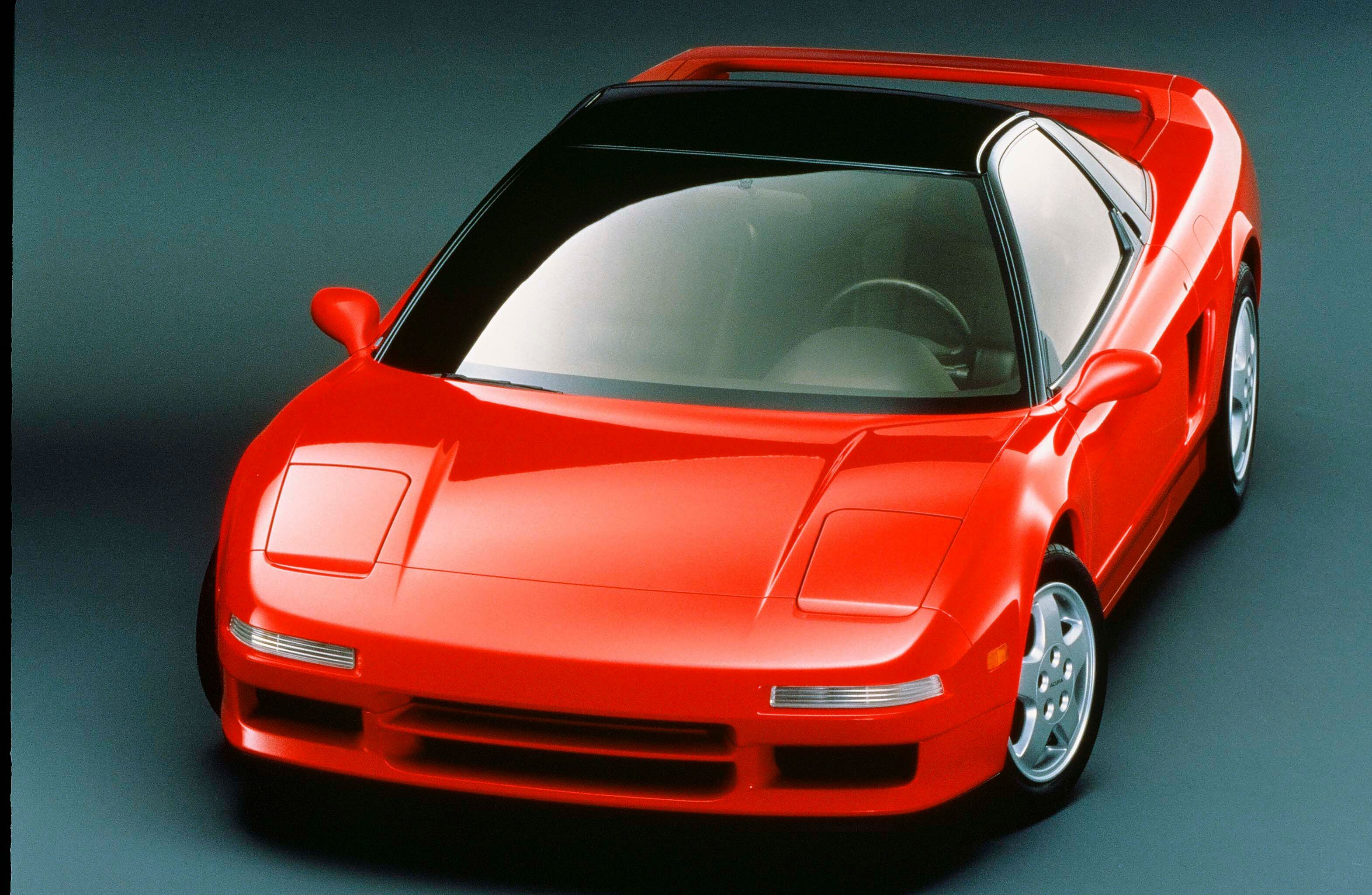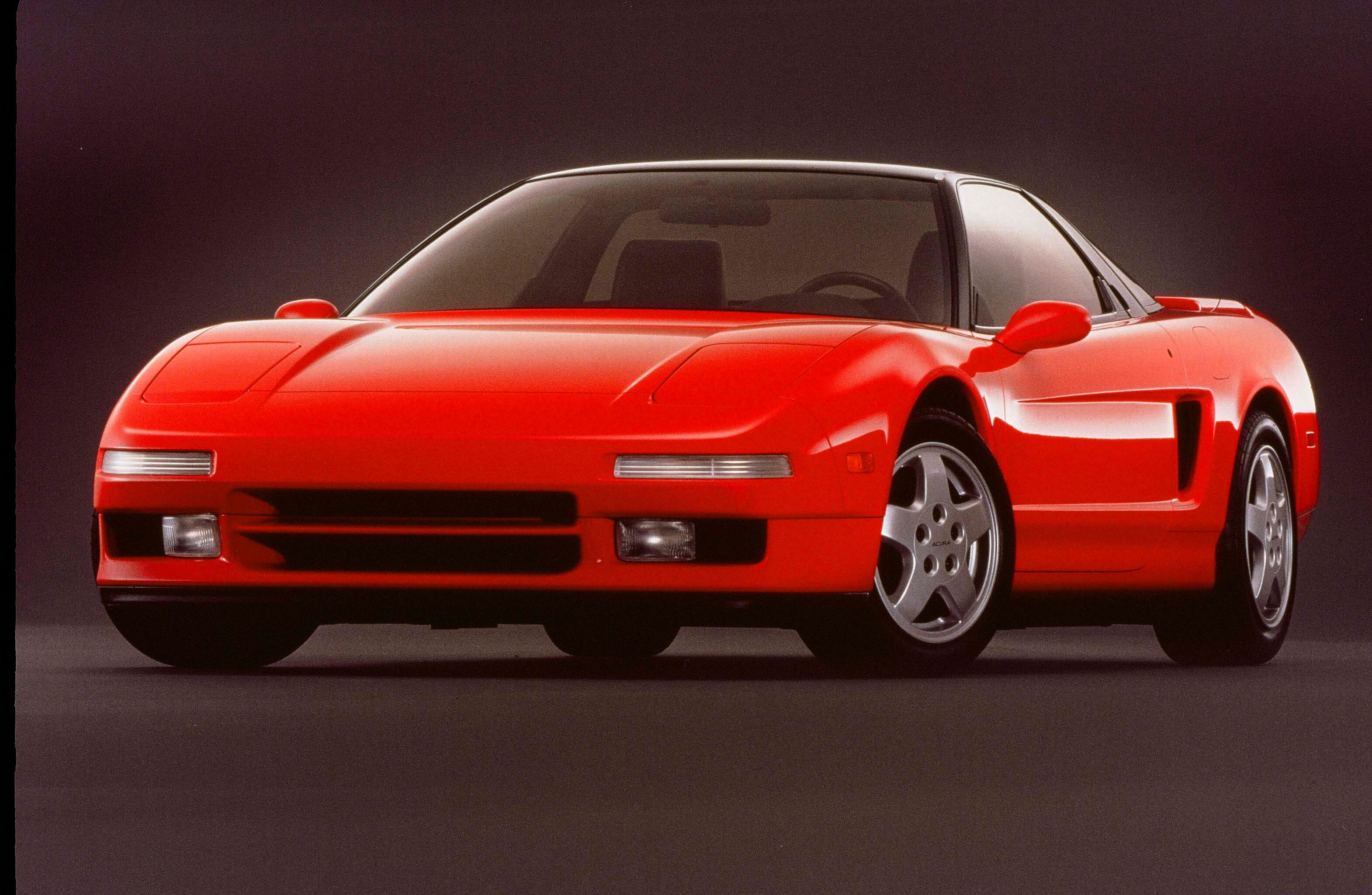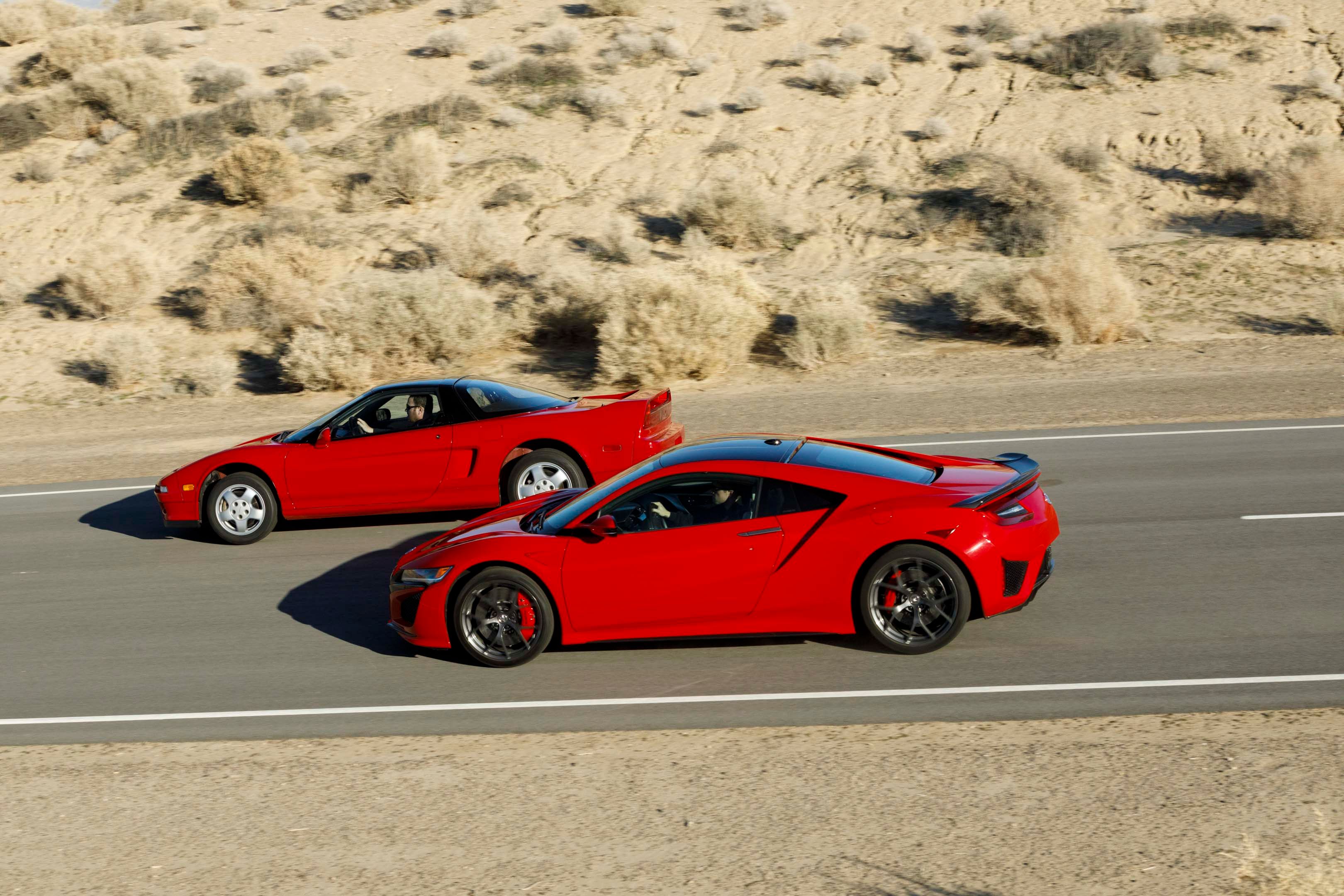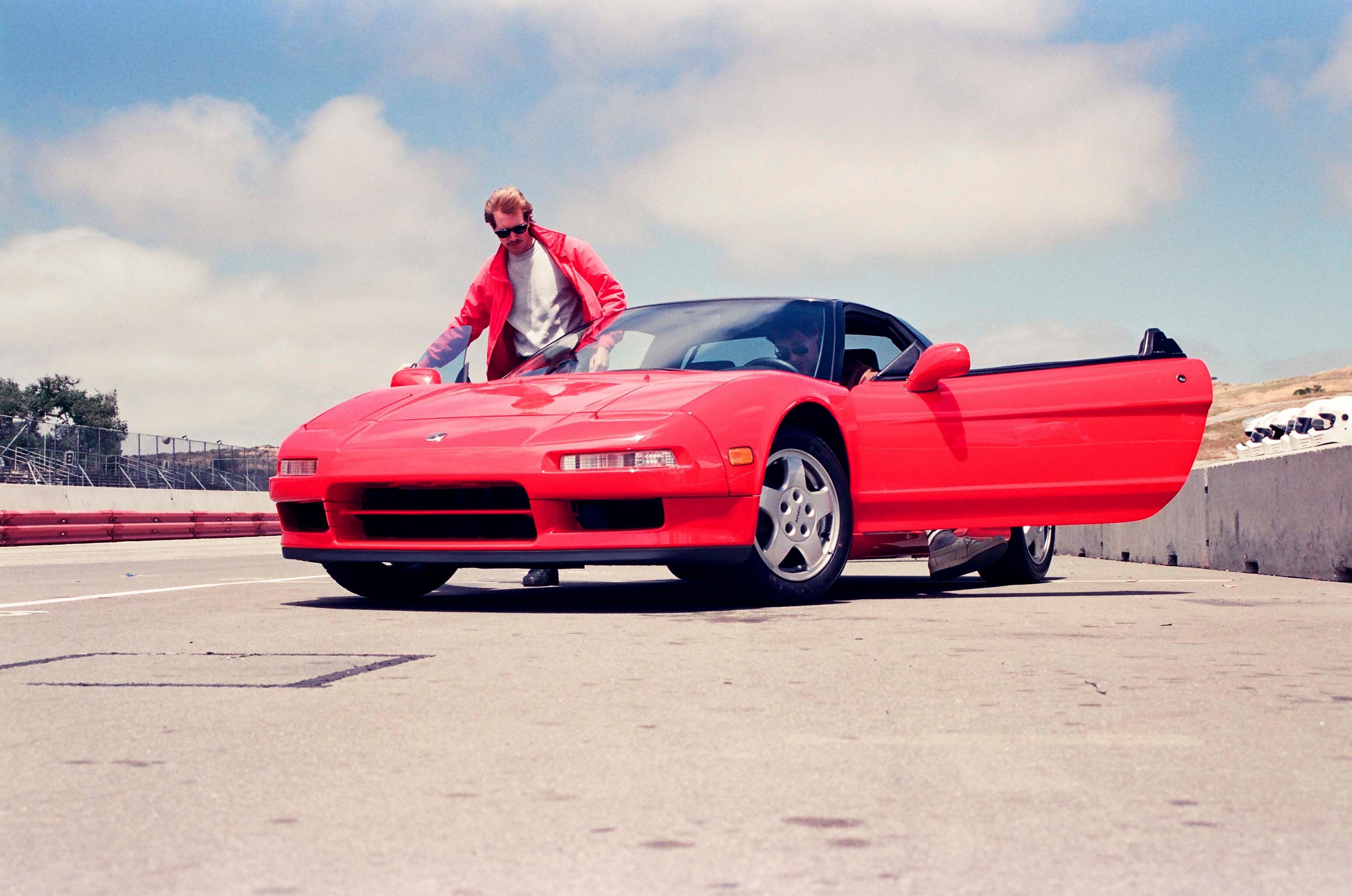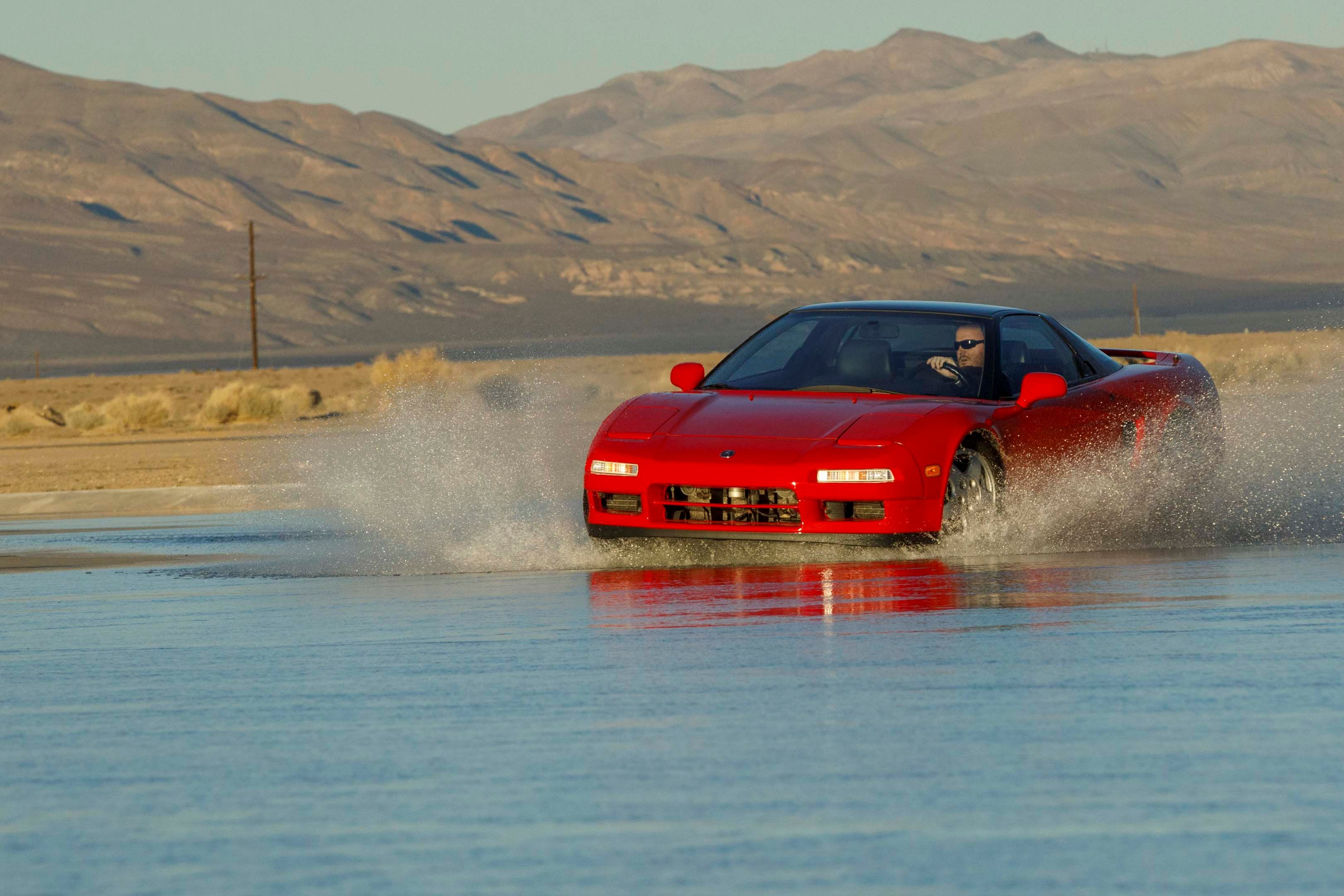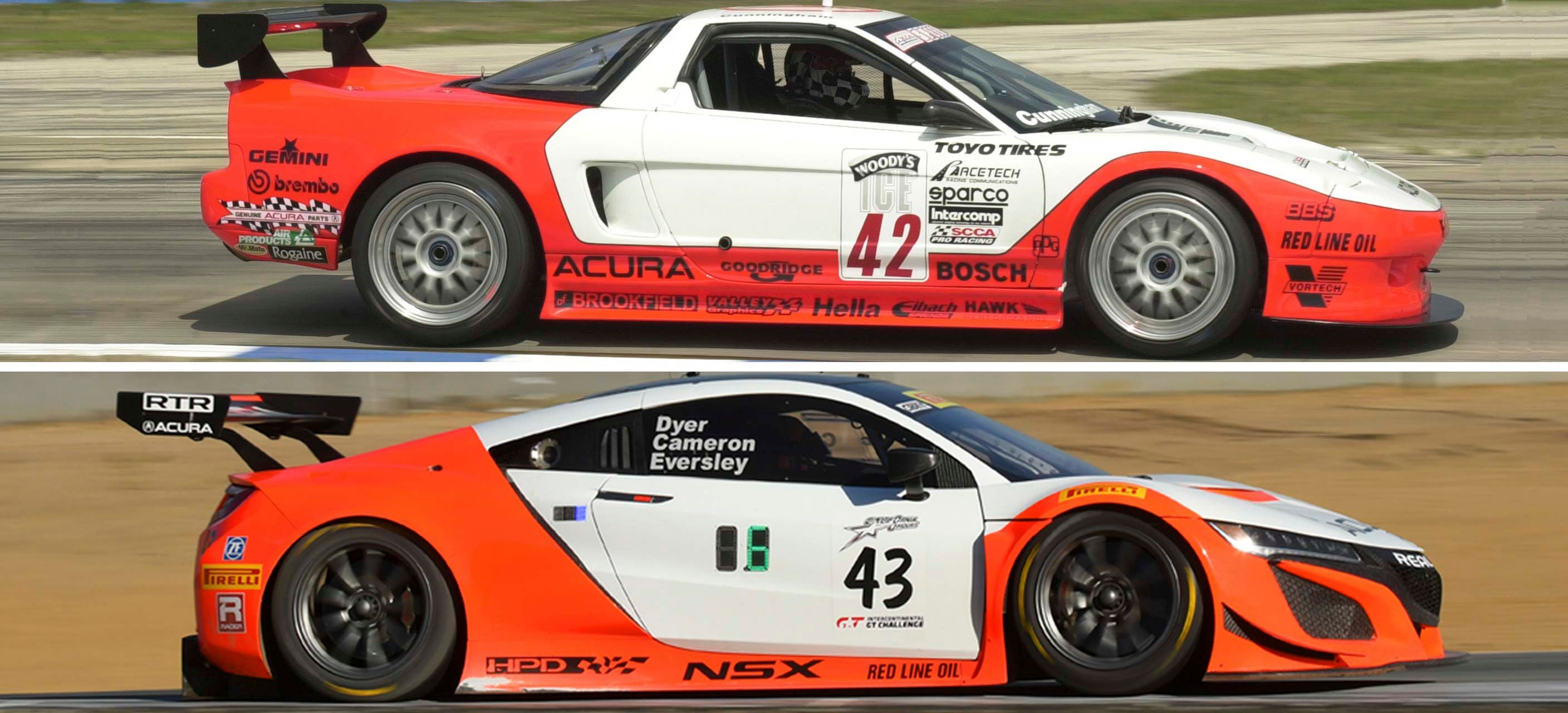On February 9th, 1989, Acura unveiled what would become the first generation of the NSX, the V-6 mid-engined supercar for people who loved the idea of Ferrari-like performance inside a car that kept all the core user-friendly values of any Honda. Acura was only three years old when the world first saw the clean, elegant, and sporty silhouette of the red prototype uncovered under the lights of the Drake Hotel in Chicago. The prototype was shorter and narrower than the final production version, but the media was alight right away, and praise came almost immediately. Honda kept the NSX in production until 2005 when the NA2 version that still retained many of the original styling cues was retired. Nowadays, we're enjoying a radically different sports car from Honda that bears the name NSX so it's interesting to go back and look at the car that started the myth.
The NS-X Prototype Wowed Everyone at the 1989 Chicago Auto Show
In the '80s, if you wanted to go fast in a car with the engine strapped behind the seats, you'd have to head to a dealership that would sell you Italian exotics. Be it a Lamborghini or a Ferrari; these were the usual suspects when it came to mid-engine supercars. Both manufacturers were battling over poster supremacy with their wedge-shaped beasts: the Testarossa and the Countach. There were other supercars at the time too, but these were the ones that caught everyone's attention.
First, let's see what the Japanese were up against. The 328, developed as an evolution of the 308, debuted in 1985 and featured a 3.2-liter, 32-valve, naturally-aspirated V-8 with 270 horsepower and 231 pound-feet of torque on tap. In GTB specification, it weighed only 2,784 pounds and could reach 60 mph from a standing start in 5.5 seconds en route to a top speed of 166 mph. The car featured independent front and rear suspension with double wishbones, coil springs, telescopic dampers, and anti-roll bars. The power reached the rear wheels through a five-speed manual transmission. There was also a turbocharged version of the 328 powered by a 2.0-liter unit, but that offered less oomph coupled with the typical turbo lag. Designed by Leonardo Fioravanti for Pininfarina, the 328 cost between $58,400 and $62,500 back in 1985 and sat above the Mondial 8 in terms of both performance and price.
By the time Ferrari unveiled the 328, Honda had dipped its feet into the water and partnered with Pininfarina itself to design a concept, the HP-X. Formally unveiled in 1984, the HP-X (Honda Pininfarina-X, where X referred to the to-be-found value in mathematics) was adorned with flowing lines, emphasized by the multitude of strakes that ran obliquely down the sides of the car following the design line that separated the white bodywork to the lower black-colored area.
Work kicked off in earnest in late '84 when the engineers strapped the C20A 2.0-liter V-6 found in the Honda Legend to the back of a modified Honda City microcar. The Japanese automaker was at the time also busy rebuilding its reputation in Formula 1, having signed a partnership with Spirit in 1983 that, in turn, caught the eye of Frank Williams who quickly persuaded Honda into supplying the engine for his team.
Honda had previously participated in Formula 1 in the '60s but exited amid a devastating crash at the 1968 French GP that killed French driver Jo Schlesser who was pedaling Honda's RA302 car, a single-seater with its monocoque made out of magnesium. The car was deemed too dangerous to drive by John Surtees, so Honda enlisted Schlesser's help as a one-off deal for the French round. Sadly, the 40-year-old Frenchman lost control and crashed, and the car burned thanks to the magnesium body.
By 1985, Pininfarina was contacted again to develop the final design of the NS-X (New Sports-eXperimental). It was already decided at that stage that the Legend's SOHC V-6 wasn't going to cut it, so a new engine was developed, the C30A V-6 with dual overhead cams that made use of the now-famous VTEC technology. A non-VTEC version of the same unit was also tested, but it only offered about 250 horsepower and 208 pound-feet of torque. In its final iteration, the C30A cranked out 270 horsepower, 301 pound-feet of torque and had redlined at 8,000 rpm. It had titanium connecting rods which never stepped outside of the confines of motor racing before.
The NS-X, or NSX as it was called when it was put into series production, was the first road-going car to have an aluminum semi-monocoque architecture which shaved off about 500 pounds in comparison to a similar steel structure.
Ken Okuyama and Masato Nakano were responsible for piecing the exterior design together while the interior was mostly the work of Shigeru Uehara who, when it came to the topic of outside visibility, took inspiration from the cockpit of the F16 Fighting Falcon. The finished product was a car that looked Italian on the outside but was far more comfortable, practical and easy to get along with than anything coming out of Modena or Sant'Agata Bolognese.
Satoru Nakajima handled much of the early track tests, and endurance runs with the NS-X mules. Nakajima was put by Honda in the Lotus F1 team's driver roaster for 1987 when the Japanese manufacturer also began supplying engines for the British outfit. He partnered Ayrton Senna who'd been with Lotus for the past two seasons. Known for his ability to give accurate feedback on a car's behavior and to track down a car's faults, he also took part in the testing program of Honda's supercar.
His earliest remarks criticized the car's somewhat wallowy feel, and he encouraged the engineers to stiffen the suspension up as well as the chassis. In the end, the production NSX was 50% stiffer than early mules. Senna mainly tested the NSX at the Suzuka track, but he was also part of a team that traveled to Germany's Nordschleife to further explore the car's limits.
The production version dropped in 1990, and it was longer than the red prototype shown in Chicago because that example was one of the mules and it was fitted with a smaller engine. You can see images of the red machine in Honda's tribute video where you will also watch a production first-generation NSX drive about next to a 2019 NSX that acts as if it can just stay with its older relative although it has more than twice the horsepower and 175 extra pound-feet of torque. Granted, it's also roughly 800 pounds heavier, but that's because it has three electric motors in the front and one in the rear.
As I said, by the time Honda introduced the NSX, Ferrari moved on from the 328 and was busy trying to sell the 348. It was the last car designed by Fioravanti for Pininfarina and also the last car that Enzo himself saw in the development stage as he died in 1988, one year before the 348 was launched. At the time, Ferrari's technical department was led at the time, according to the Ferrari F40's creator, Nicola Materazzi, by an engineer brought over by Fiat who had experience working for the Carraro Tractor company. The result looked like a baby 512TR but was otherwise pretty poor in the areas that mattered.
Luca Di Montezemolo said, referring to the 348, that "I was utterly disappointed. This was clearly the worst product Ferrari had developed for some time.” Long-time Ferrari test driver Dario Benuzzi “was working on the F40 at the time, and then broke my hand so couldn’t sign off the 348. I went straight on to the 355.” Former Scuderia Ferrari chief engineer and designer Mauro Forgheri couldn't find anything nice to say about the 348 either, calling it "the worst project ever" while Materazzi himself said that the car was "dangerous." In spite of all this, Ferrari sold some 9,000 348s with their 3.4-liter V-8s capable of 300 horsepower and 238 pound-feet of torque. Meanwhile, Honda sold 18,000 NSX cars of the first generation (NA1 and NA2) in 15 years.
Further reading
|
|
link=art1182295> |
Read our full review on the 2019 Acura NSX.
|
|
link=art155562> |
Read our full review on the 2018 Acura NSX.
|
|
link=art1449> |
Read our full review on the 1990-2005 Honda NSX


